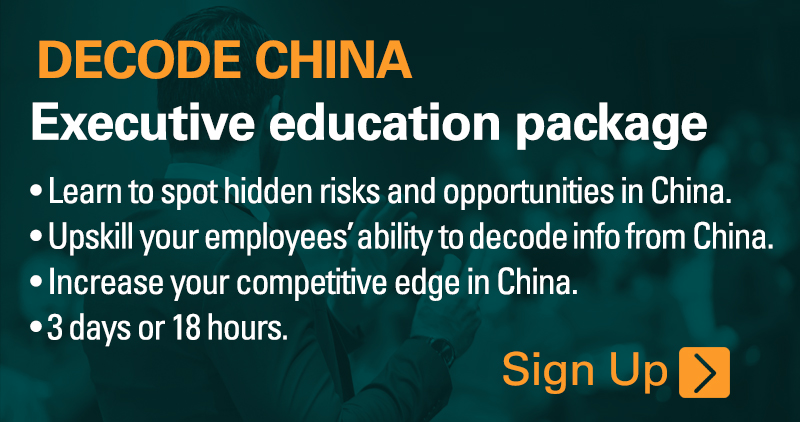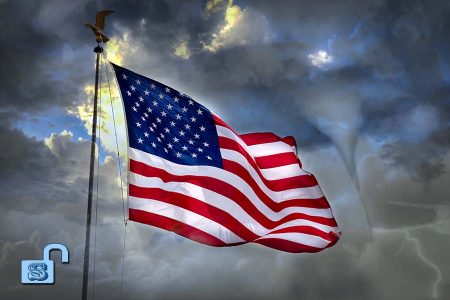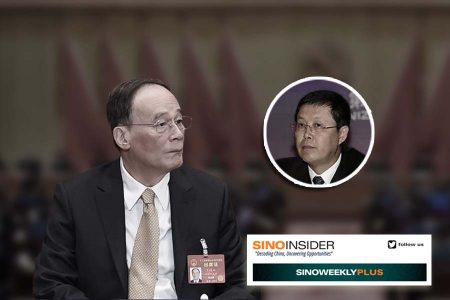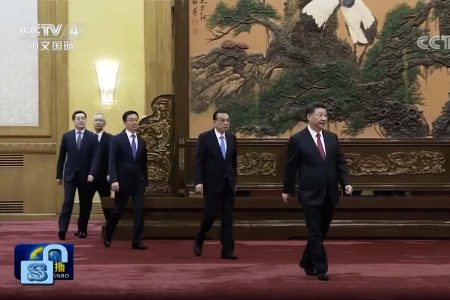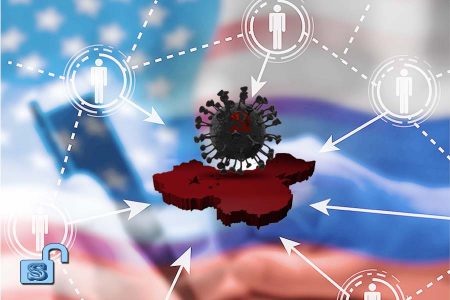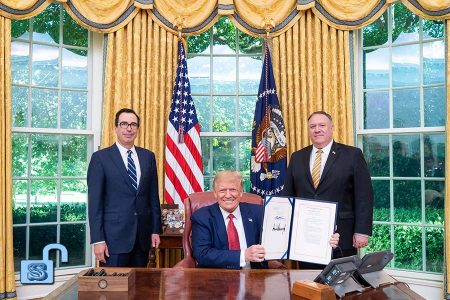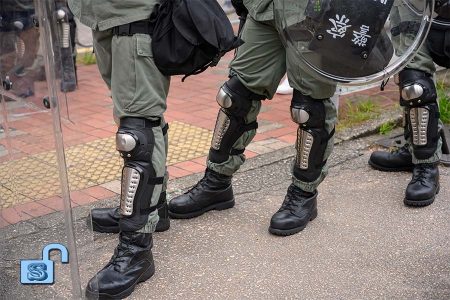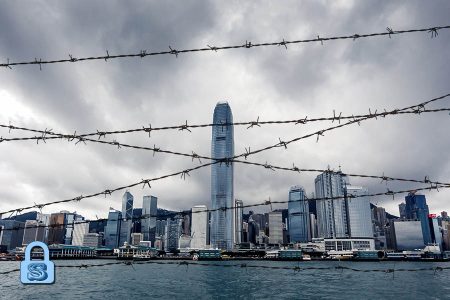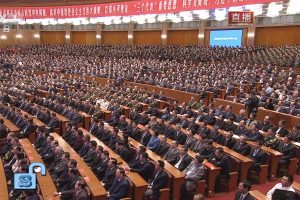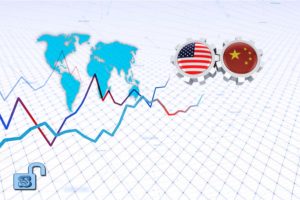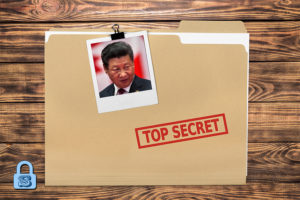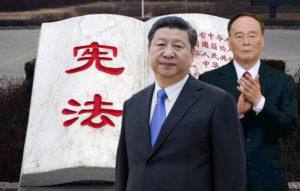◎ Part two of our 2018 forecasting review.
To sidestep risk and succeed in China, businesses and policymakers need to get macro and geopolitical trends right.
In 2018, SinoInsider correctly analyzed and anticipated several “big picture” trends and geopolitical developments concerning China in advance of the media, commentators, and other consultancies or think-tanks. While we initially appeared to miss some predictions, later events verified our forecasting to be directionally accurate.
We look at five of our top macro predictions in the second part of our forecasting scorecard for 2018. (See here for the first part and our full track record here.)
- The escalating CCP factional struggle
What we said: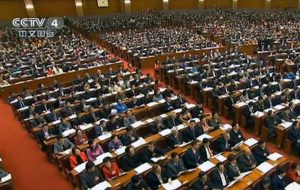
We believe that all issues in China are downstream from Chinese Communist Party elite politics, and the core problem in CCP elite politics is factional struggle.
Thus, while the mainstream view held that Xi Jinping was the “most powerful leader in decades” and would be virtually unchallenged after the 19th Party Congress last year, we instead wrote in our China 2018 outlook that Xi’s “political position remains somewhat shaky.”
“China’s political scene is set to become more volatile in 2018,” we also wrote.
Based on our observation, we made the following political predictions:
- Jan. 2: Jan. 2: Xi will be challenged by an escalating factional struggle and the CCP system.
- Jan. 2: We again predicted that Wang Qishan will become Chinese vice president.
- Jan. 2: Xi will continue reshuffling personnel on a large scale.
- Jan. 2: Xi will continue the anti-corruption campaign, in particular targeting the financial sector, the military, and the legal and domestic security apparatus.
- Feb. 18: We made our first forecast of key personnel appointments at the Two Sessions (118 officials).
- March. 13: We updated our Two Sessions forecast list.
- Dec. 17: We said that Xi’s planned speech on the 40th anniversary of reform and opening up is a sign of political crisis in China.
What happened:
- All the macro-political trends which we identified above were verified by developments that unfolded throughout the year. For details, see our China 2018 outlook scorecard and our track record.
- We scored over 71 percent in predicting the personnel movements at the Two Sessions.
- March 21: the CCP released its plan for reforming Party and state institutions. The plan contains key reforms which target Jiang Zemin’s political legacy, including dissolving the “610 Office” and placing control over the intelligence directly under Xi.
- Starting in July, voices opposing Xi and his policies from within the regime were heard with increased regularity.
- Oct. 7: Meng Hongwei, the Interpol head and public security vice minister, was officially investigated by the Chinese authorities. We analyzed that Meng’s arrest hints at a “soft coup” by factional rivals against the Xi leadership (see here and here).
- Oct. 22 to Oct. 25: Xi Jinping carries out an unusually “subdued” tour of Guangdong.
- Dec. 1: Xi commits to making structural reforms and market liberalization during a dinner meeting with President Donald Trump. We analyzed that the factional struggle, which had been escalating since July, is likely a reason behind Xi’s unusual decision to make concessions to Trump on Dec. 1.
- Dec. 18: Xi indirectly credits Jiang Zemin with Deng’s post-1992 reform push, another unusual move which confirms our analysis of stiff political opposition to Xi and political crisis in China.
Forecast strength: Mostly accurate.
See more: Our track record on Chinese elite politics.
- China cannot withstand a trade war
What we said: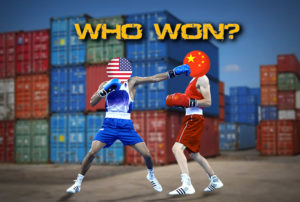
In January, we noted that there was a “rising probability” of China facing gray rhinos and black swans in 2018. After the U.S. and China ratcheted up trade tensions in April, we predicted that China would not be able to withstand a trade war.
- Jan. 2: We listed some economic dangers for China in the coming year in our China 2018 outlook.
- April 1: We predicted that China won’t touch soybeans in a trade war.
- April 12: We predicted that China cannot withstand a trade war based on seven points, including agricultural, economic, and financial problems.
What happened:
A top Chinese banking regulator echoes our warning about gray rhinos and black swans in January. Meanwhile, China’s economy worsened and financial markets plummeted in the wake of the U.S. Section 301 investigation and President Trump’s tariff push. Official financial data for November and the PRC’s rush to buy U.S. soybeans in December have since verified our predictions made earlier in the year.
- On Jan. 17, top banking regulator Guo Shuqing told state media that China’s financial system is vulnerable to risks and faces the threat of gray rhinos and black swans.
- On Dec. 12, China bought 1.5 million to 2 million metric tons of U.S. soybeans, according to the U.S. Soybean Export Council. China’s soybean purchase suggests that our April prediction that China won’t touch soybeans is directionally accurate.
- According to data from the national statistics bureau released in December:
- China’s industrial output grew at 5.4 percent in November, the lowest in three years.
- Total retail sales increased by 8.1 percent year-on-year in November, the lowest since 2003.
- In November, China’s total exports grew by 10.2 percent, down 9.8 percent from a month ago. Imports grew at 7.8 percent, down 17.9 percent from October.
- Automobile production in China shrank 3.2 percent from the previous year.
- China’s total grain output for 2018 was 657.89 million tons, a drop of 3.71 million tons (0.6 percent) from 2017.
- In January, China’s foreign exchange reserves totaled $3.161 trillion. By November, China’s reserves had fallen by $99.76 billion to $3.061 trillion.
- On Jan. 3, the onshore renminbi exchange rate was 6.5009. By Dec. 19, the onshore RMB rate has fallen to 6.8911. The RMB was 6.2409 at its highest (Feb. 7) and 6.9771 at its lowest (Oct. 31), a variation of over 10.55 percent.
- As of Dec. 19, the Shanghai index was down 22.91 percent, while the Shenzhen index was down 32.8 percent. In total, China’s A-shares have lost $1.88 trillion in value since the start of the year (calculated using the 6.8911 RMB exchange rate on Dec. 12).
Forecast strength: Mostly accurate.
- “China cannot withstand a trade war” — Our predictions were made about seven months in advance of verification (April predictions verified by official economic data released in December).
- China is misreading the United States
What we said: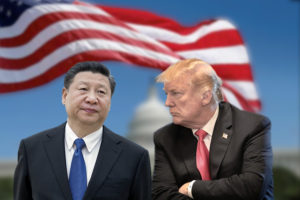
In August, we noted that the CCP was misreading America’s China policy revolution in its response and propaganda on U.S. tariffs. We also noted an ideological turn in U.S. policy on China.
- Aug. 17: We analyzed that “the CCP’s response to America’s China policy revolution” is either “a serious misreading of the situation” or “a gamble on changes in domestic U.S. politics at the midterm elections creating favorable conditions for the PRC to renegotiate trade with America.”
- Aug. 29: In analyzing an Aug. 24 report by the U.S.-China Economic and Security Review Commission on the CCP’s United Front work overseas, we noted that America’s strategic competition with China will move to the ideological level when the U.S. continues to spotlight “CCP influence operations and takes active steps to counter CCP propaganda.”
What happened:
Trump’s remarks at the United Nations General Assembly, a tough China policy speech by Vice President Mike Pence, statements by senior U.S. intelligence officials, and the U.S. midterm election outcome have verified our assessment of the shifting geopolitical environment.
- Sept. 4: William Evanina, the director of the U.S. National Counterintelligence and Security Center, said that China is “existentially, long term … the largest threat to our national security, bar none – it’s not even close.”
- Sept. 13: FBI director Christopher Wray said: “If I look at our counterintelligence mission overall, China is our top priority in that space.”
- Sept. 25: Trump said at the UN: “Virtually everywhere socialism or communism has been tried, it has produced suffering, corruption, and decay. Socialism’s thirst for power leads to expansion, incursion, and oppression. All nations of the world should resist socialism and the misery that it brings to everyone.”
- Oct. 4: In a speech at the Hudson Institute, Vice President Pence criticizes the CCP for its predatory trade policies as well as its espionage, influence, and interference activities in the United States.
- Nov. 8: The results of the U.S. midterm election reveal that CCP agricultural tariffs failed to sway voters from supporting Trump and the Republicans.
- Dec. 1: Xi Jinping commits to market liberalization and structural reforms in his dinner meeting with President Trump. China also agrees to make large purchases of agricultural and other products from the United States.
- Dec. 11: The State Department’s Global Engagement Center announces a new effort to counter propaganda and disinformation campaigns from rogue nations like China, Russia, and Iran.
Forecast strength: Accurate.
- “China is misreading America” — Our prediction was made about three months in advance of verification (Aug. 17 prediction verified by U.S. midterm elections on Nov. 6).
- “Ideological turn in U.S. policy on China” — Our prediction was made about one and a half months in advance of verification (Aug. 29 prediction verified by Mike Pence’s speech on Oct. 4).
See more: Our track record on Sino-U.S. relations.
- America is building a new world order
What we said: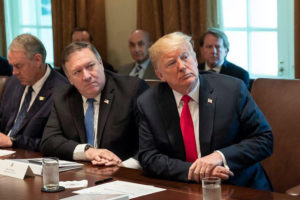
After President Trump and European Commission president Jean-Claude Juncker announced a new U.S.-EU trade agreement in Washington on July 26, we wrote that Trump is “withdrawing America from the post-WWII world order and creating a new world system.”
- July 27: We analyzed that Trump is reshaping the CCP-hijacked world order with actions such as “pulling out of the Trans-Pacific Partnership and the Paris climate accord; starting trade conflicts with allied nations and China; withdrawing the U.S. from the United Nations Human Rights Council; and forging closer ties with Taiwan.”
- Aug. 22: In the wake of Taiwan losing its allies to China, we analyzed that it is the “PRC, and not the ROC, that is at greater risk of being isolated on the world stage.”
What happened:
- Sept. 24: Trump and South Korea’s Moon Jae-in sign a revised United States–Korea Free Trade Agreement.
- Oct. 1: The United States, Mexico, and Canada negotiate a U.S.-Mexico-Canada Agreement to replace the North American Free Trade Agreement. The leaders of the three countries sign the agreement at the G-20 summit on Nov. 30.
- Oct. 4: In his speech at the Hudson Institute, Vice President Mike Pence noted that “the Chinese Communist Party began to pursue authoritarian expansionism” soon after taking power in 1949, and that “America will always believe Taiwan’s embrace of democracy shows a better path for all the Chinese people.”
- Oct. 16: The Trump administration announces that it would seek separate trade agreement talks with Japan, the European Union and the United Kingdom.
- Oct. 17: The White House announces that the U.S. is withdrawing from the Universal Postal Union.
- Dec. 4: In a speech entitled, “Restoring the Role of the Nation-State in the Liberal International Order,” U.S. Secretary of State Mike Pompeo said that America is “rallying the noble nations to build a new liberal order that prevents war and achieves greater prosperity.” Pompeo said that “China’s economic development did not lead to an embrace of democracy and regional stability; it led to more political repression and regional provocations.” He added that countries like Iran and China are “undermining the international order.
- Dec. 12: The U.S. Congress passes the Asia Reassurance Initiative Act, which aims to “develop a long-term strategic vision and a comprehensive, multifaceted and principled United States policy for the Indo-Pacific region.” The Act contains a section on U.S. commitments to Taiwan.
Forecast strength: Directionally accurate.
- “America is looking to build a new world order” — Our prediction was made about four months in advance of verification (July 27 prediction verified by Pompeo’s speech on Dec. 4.)
See more: Our track record on Sino-U.S. relations.
- Peace and denuclearization of the Korean Peninsula
What we said: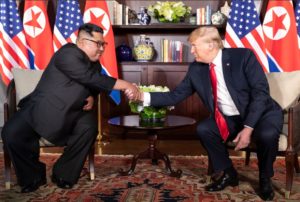
North Korean leader Kim Jong Un’s surprise trip to Beijing in March led us to revise our prediction on North Korean denuclearization in January. Earlier, we wrote that Kim “won’t give up his nuclear weapons.” After Kim’s Beijing trip, we wrote that denuclearization and peace on the Korean Peninsula is now a very real possibility.
Our assessment of the North Korean situation led us to predict that a meeting between Trump and Kim would still take place in June as scheduled despite Trump having canceled the summit in May.
- March 26: We predicted that Kim Jong Un could seek a deal where he exchanges his nuclear weapons for a lifting of sanctions and preserving his rule over North Korea. We also predicted that Kim’s biggest headache would be selling denuclearization to the North Korean people.
- March 28: We predicted that North Korea will denuclearize and that the “odds of seeing peace on the Korean Peninsula are very high.”
- March 30: After K-pop stars and other South Korean artists hold performances in Pyongyang, we predicted that Kim could be looking to implement reform and opening up in North Korea.
- April 27: We predicted that President Trump would want North Korea to denuclearize within his first term in office.
- May 24: After Trump cancels his summit in Singapore with Kim, we predicted that the meeting will take place as planned in June.
- June 15: After Trump announced tariffs on China, we predicted that the denuclearization process would be affected.
What happened:
Despite some “backsliding” from Pyongyang, the peace and denuclearization process on the Korean Peninsula has trended in a positive direction in 2018. Key developments after Kim Jong Un’s Beijing trip include:
- April 20: At the third plenary meeting of the 7th Central Committee of the Workers’ Party of Korea, Kim announces that North Korea will concentrate its efforts on developing the economy and improving the people’s standard of living.
- April 27: Kim and South Korean president Moon Jae-in meet at the demilitarized zone and sign the “Panmunjom Declaration for Peace, Prosperity and Unification of the Korean Peninsula.” The Declaration includes the complete denuclearization of North Korea.
- May 26: Kim and Moon hold a surprise second summit at Panmunjom after Trump cancels his summit with Kim.
- June 12: Trump and Kim meet in Singapore and sign a joint declaration that reaffirms the Panmunjom Declaration and the immediate repatriation of U.S. POW/MIA remains.
- Sept. 18 to Sept. 20: Kim Jong Un and Moon Jae-in hold a third meeting in Pyongyang. On Sept. 19, Kim and Moon signed a joint agreement which South Korea characterized as a proclamation to end the Korean War.
- Sept. 20: U.S. Secretary of State Mike Pompeo sets a January 2021 deadline for North Korean denuclearization.
- Nov. 20: North Korea demolishes 10 guard posts in the demilitarized zone.
- Dec. 13: Seoul announces that North and South Korea will hold a ceremonial groundbreaking to reconnect railways and roads across the peninsula on Dec. 26.
Forecast strength: The North Korea issue is still developing. Our predictions are currently directionally accurate.
See more: Our track record on Sino-U.S. relations.
Get smart:
SinoInsider’s ability to accurately predict macro trends concerning China is based on our China analysis. And we are highly accurate in forecasting China because we deeply understand the CCP and its operations.
Businesses and policymakers who are looking to surpass the competition stand to gain a winning advantage with our consulting services, training courses, and premium newsletter.

